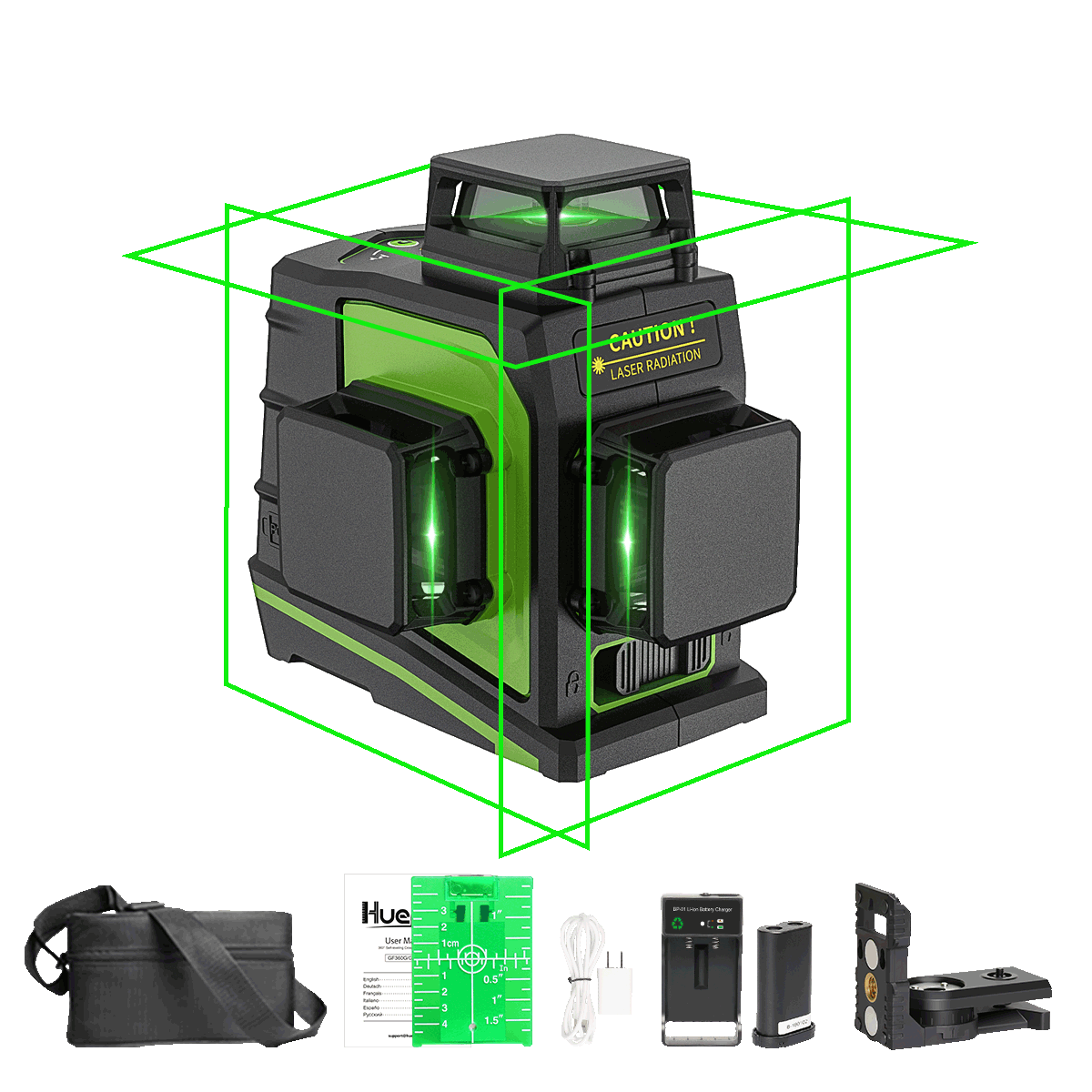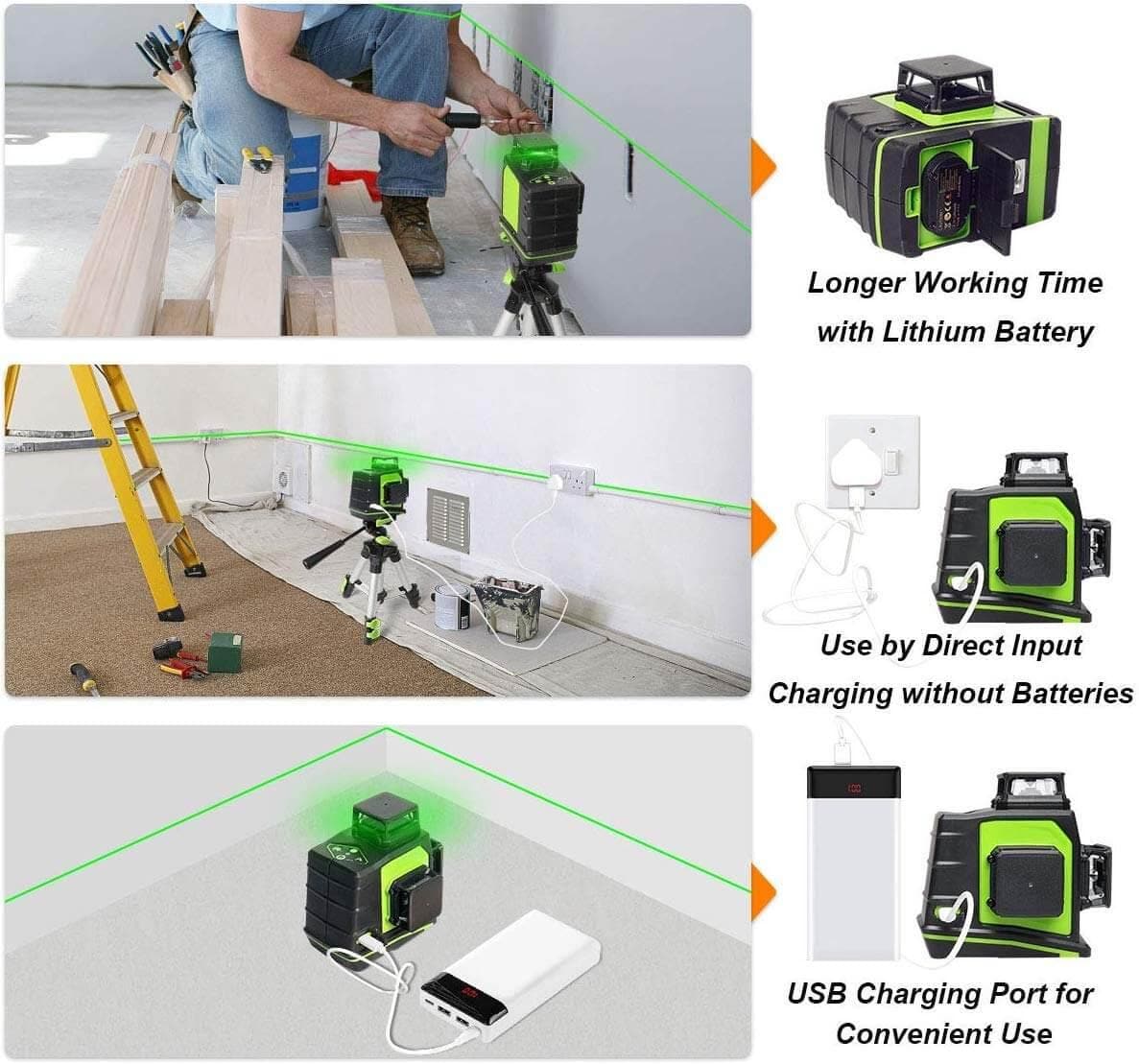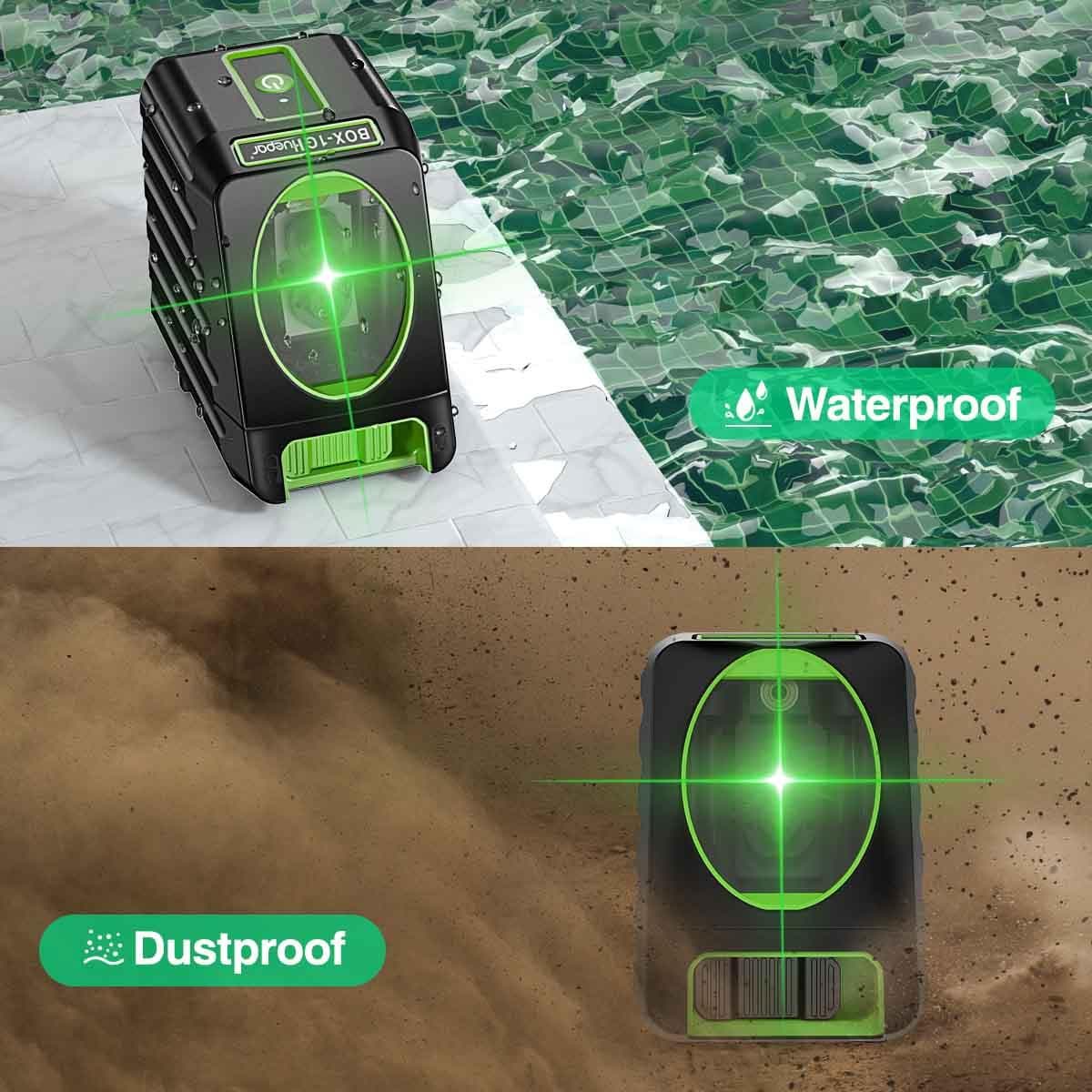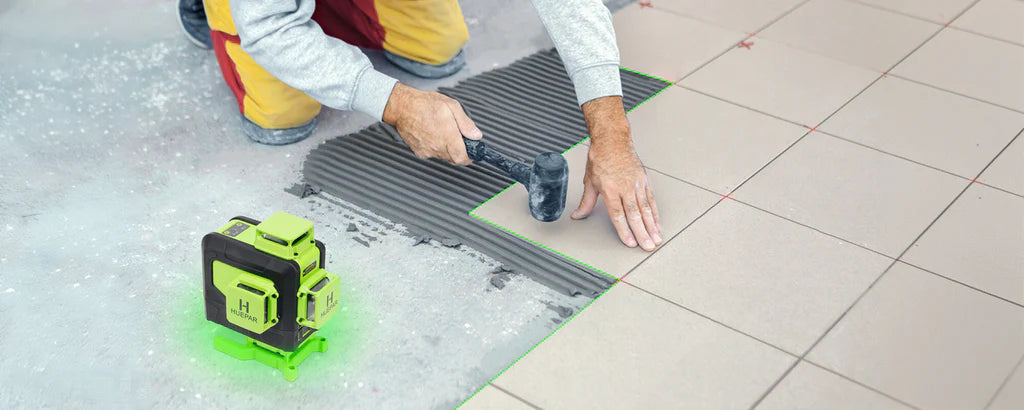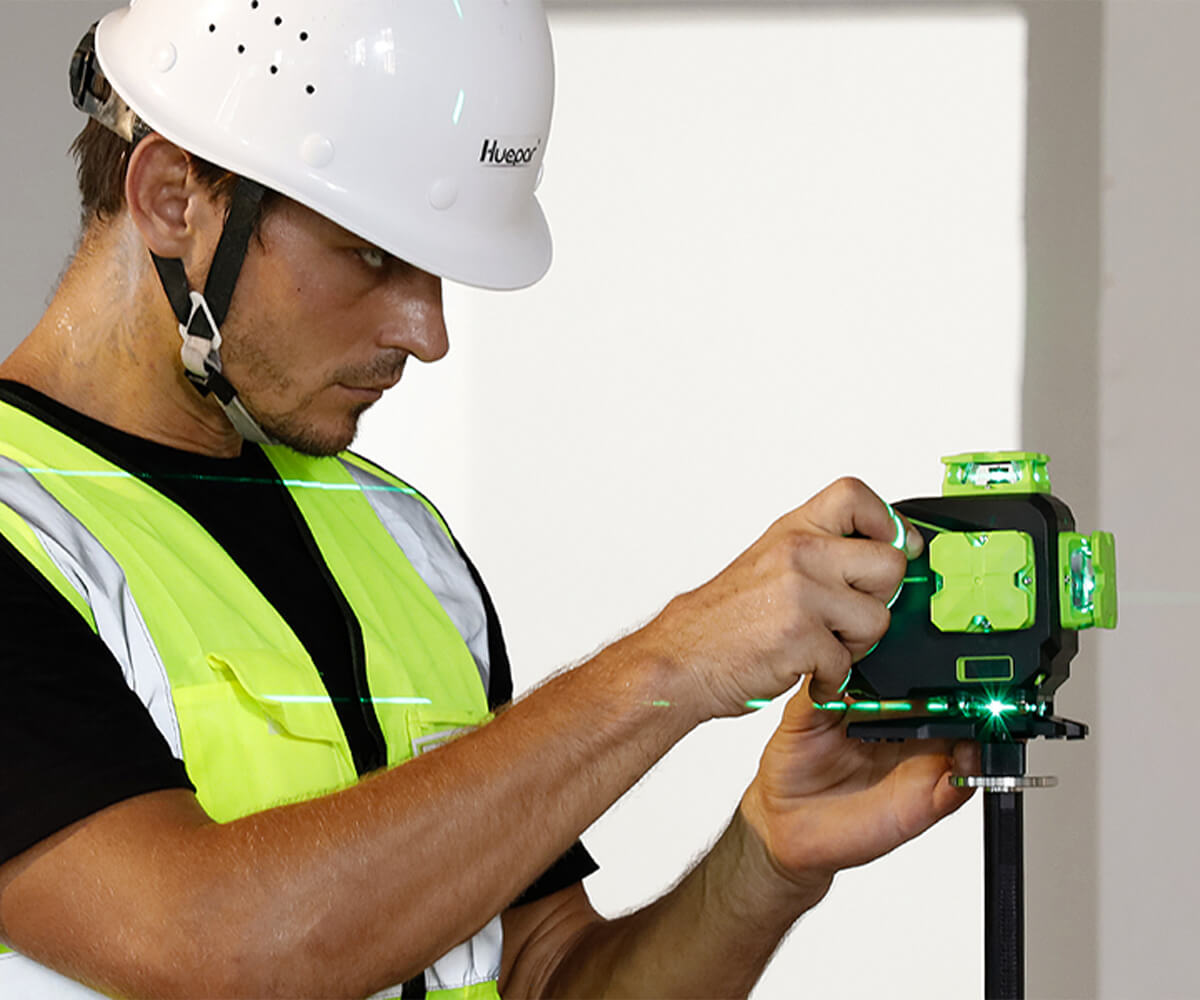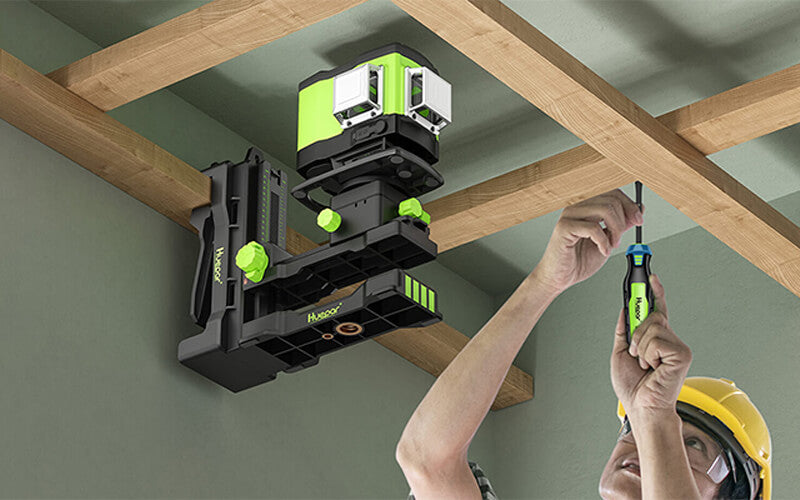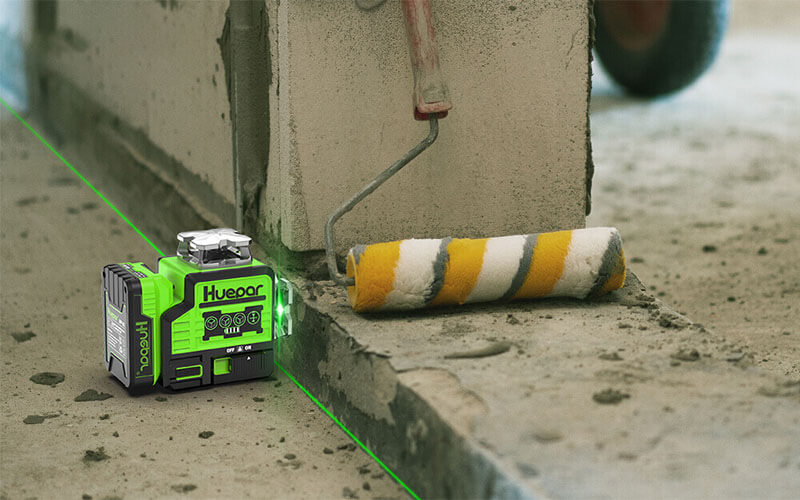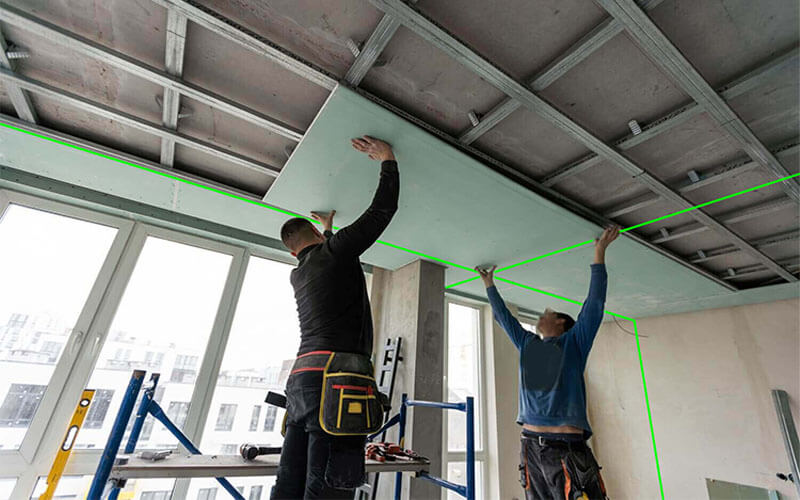
Mastering Precision: A Deep Dive Into 3D Laser Levels
Understanding 3D Laser Levels
What Are 3D Laser Levels?
3d laser levels are high-tech tools used in construction. They help create precise lines and shapes by projecting three-dimensional beams. This creates vertical and horizontal lines that builders use to align structures. These laser levels are key for tasks needing exact measurements. They are especially useful when working on large-scale projects. They help ensure accuracy across various surfaces and distances.

How Do 3D Laser Levels Work?
3d laser levels are cutting-edge tools in precision measurement. They project laser lines along three planes. This creates a 3D cross-point on surfaces. To do this, they use multiple laser diodes. These diodes project vertical and horizontal lines. A 3D laser level can self-level within a certain range. It's a gyroscope or pendulum that makes this happen. This feature helps to ensure accuracy. When turned on, the laser diodes emit beams. The beams intersect at 90-degree angles. This gives workers a reference point for leveling. It's like drawing a chalk line, but more precise and with less effort. They are perfect for tasks that need exact alignment. They suit installing cabinets, tiles, and complex structures.
The Advantages of Using 3D Laser Levels in Construction
3d laser levels are a game changer in construction sites. They bring many benefits. First, they provide precise 3D mapping. This means less guesswork and more accuracy. Workers can set out right angles and align walls quickly. This saves time and money. Second, they offer better quality control. Since the levels are more accurate, the final build is better. Third, they improve safety on site. With clear laser lines, there’s less risk of mistakes. And fewer mistakes mean fewer accidents. Lastly, they are easy to use. Team members can learn fast and work efficiently. This boosts productivity. Overall, 3D laser levels are a great investment for builders.
Comparing 3D, Cross Line, and 4D Laser Levels
Cross Line Laser Levels: Basics and Uses
Cross Line Laser Levels are a focused type of laser level. They project two laser lines that cross at a 90-degree angle. This feature makes them ideal for tasks that require precise right angles, such as tiling, framing, and cabinet installation. Here is how they are generally used:
- They are set up on a tripod or a flat surface.
- They can be used to ensure that walls or structures are perfectly plumb and level.
- Many models are self-leveling, meaning they automatically find and maintain a level within a certain range.
- Cross Line Laser Levels are often preferred for indoor work, where their lines are easy to see.
Home DIY enthusiasts and professional contractors both benefit from the ease and accuracy of Cross Line Laser Levels.
4D Laser Levels: What Are They and How Do They Compare?
4D laser levels are the latest in leveling technology. They project lines in all four planes, X, Y, Z, and time. This adds a dynamic component to the leveling process. How are they different from 3D and Cross Line laser levels? 4D levels offer more precise control in real-time and can adapt to changes during a project. This makes them ideal for tasks where accuracy is key over time. Let's compare them:
- 3D Laser Levels: emits three planes of light for X, Y, and Z axis coverage.
- Cross Line Laser Levels: projects two lines that cross at a right angle, ideal for simpler tasks.
- 4D Laser Levels: adds a time factor, allowing for adjustments in real-time, great for complex projects.
Selecting the Right Laser Level for Your Project
When picking a laser level for a project, think simple steps.
- Define what you need: Know the tasks. Are they indoor, outdoor, or both? This will guide your choice.
- Check level type: Do you need lines, dots, or both? 3D levels give lines on all sides, great for room layouts. Cross line levels are good for simpler tasks. 4D levels offer extra lines for even more detail.
- Consider features: Think about battery life, range, and accuracy. Better features might cost more.
- Think about ease of use: Look for levels that are user-friendly. Ones with clear markers and simple controls work well.
By taking these steps, you can find the right tool for your job. It will help you work faster and with more precision.
Implementing 3D Laser Technology
Best Practices for Using 3D Laser Levels
To ensure accuracy and efficiency when using 3d laser levels, follow these best practices:
- Begin with a stable surface: Ensure that the laser level is placed on a firm and stable base to prevent movement during operation.
- Calibrate often: Regularly check the calibration of your 3D laser level to maintain precise measurements.
- Keep it clean: Dirt and debris can affect the laser's performance. Clean the tool's lenses and body before use.
- Avoid direct sunlight: Direct exposure to sunlight can interfere with the laser's visibility. Use indoors or in shaded areas.
- Use safety glasses: Always wear safety glasses with UV protection to safeguard your eyes from the laser beam.
- Store properly: When not in use, store the laser level in a protective case to avoid damage and to keep it calibrated.
By following these guidelines, you will extend the life of your 3D laser level and ensure consistent, accurate results.
Maintenance Tips for Laser Levels
Caring for your 3D laser level can increase its lifespan and accuracy. Here are simple tips for maintenance:
- Regularly clean the laser windows with a soft, lint-free cloth to prevent dirt buildup that can affect the laser's clarity.
- Check the battery life and replace batteries or recharge as needed to ensure the device works properly during use.
- Store your laser level in a protective case when not in use to avoid dust and damage.
- Calibrate your laser level according to the manufacturer's schedule to maintain precision.
- Avoid exposing the laser level to extreme temperatures, as it can damage the electronic components.
By following these simple care steps, your laser level will be a reliable tool in your projects.
Future of Laser Leveling Technology in the Industry
The future of laser leveling technology in the industry looks bright with continuous advancements. Innovations in connectivity and software integration are anticipated, enabling real-time data sharing and project management. We may also see the rise of AI-driven systems that enhance precision and ease of use. Additionally, the development of more compact and power-efficient models could revolutionize on-site workflows. As sustainability becomes a priority, eco-friendly options with reduced carbon footprints could emerge. These advancements will likely set new standards for accuracy, efficiency, and sustainability in construction projects of all scales.


